Maine Coon vs Regular Cats
How To Tell Them Apart
by Carrie Profenno: Author, Coonie Mama & lifelong Mainer
Are you looking at your fluffy friend and wondering, "Is my cat a Maine Coon or a regular domestic cat?" You’re not alone - I’ve been there too!
My fascination with this breed began with my furry ginger boy Clyde. Clyde was unlike any cat I had ever had!
He played chase with our dog, came when called, and greeted me at the door. He was so smart and interactive. I had to wonder if he could "have some Coonie in him." We are in Maine, after all!
Spotting the difference between a Maine Coon and a "regular" or "normal" cat can be pretty exciting, especially when your kitty seems to have those special traits that make you think, "Hmm, could they be a Coonie?"
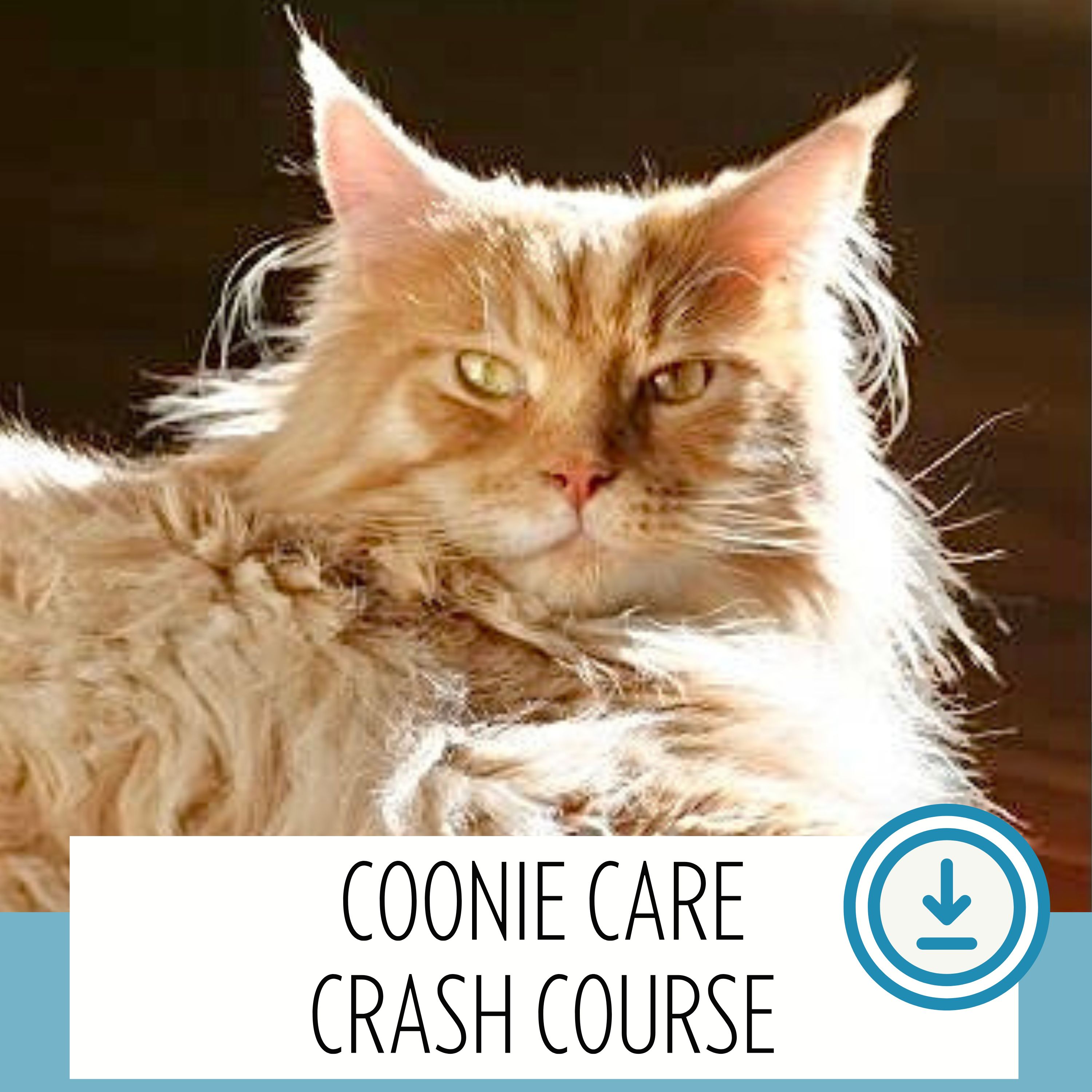
Why Are We So Curious?
Most of us start wondering about our cat's breed when we notice something a little out of the ordinary.
Maybe your cat has a super fluffy, long coat, those big, adorable paws, or a personality that’s just larger than life.
It’s natural to start thinking, “Could my cat be more than just your typical house cat?”
If you’ve got a feline friend that's a bit different, it's only natural to start thinking they might belong to a specific breed, and maybe that's where those characteristics come from.
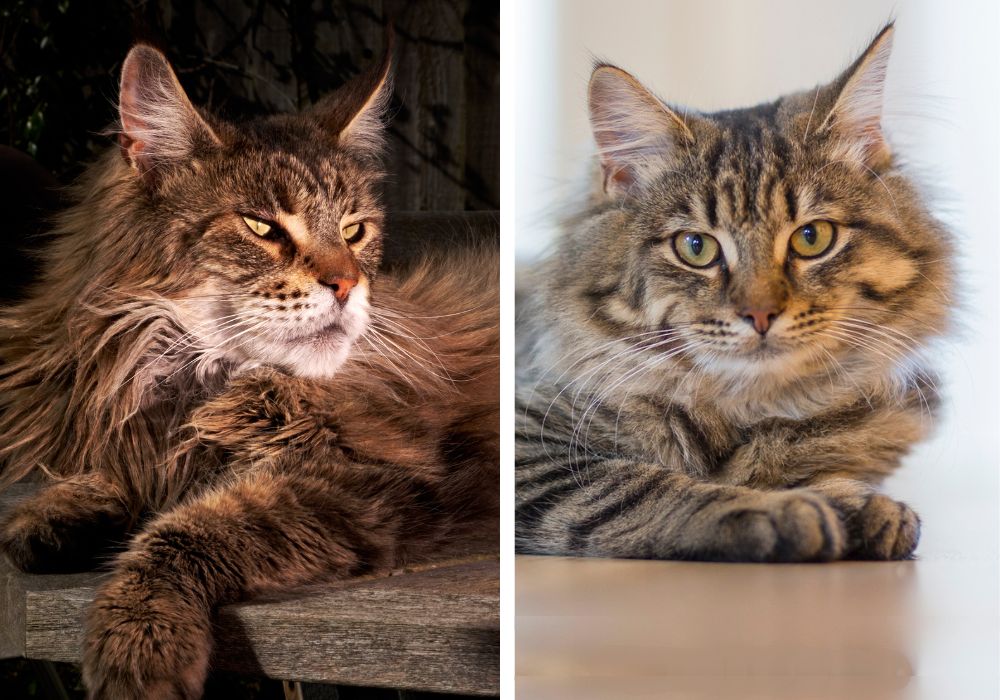
Physical Characteristics
When it comes to the physical characteristics of a Maine Coon vs regular cats, there are some distinctive features that set these gentle giants apart.
Whether you're looking at size, fur, ears, or even their expressive faces, this breed has some unique qualities worth noting.
Size And Build
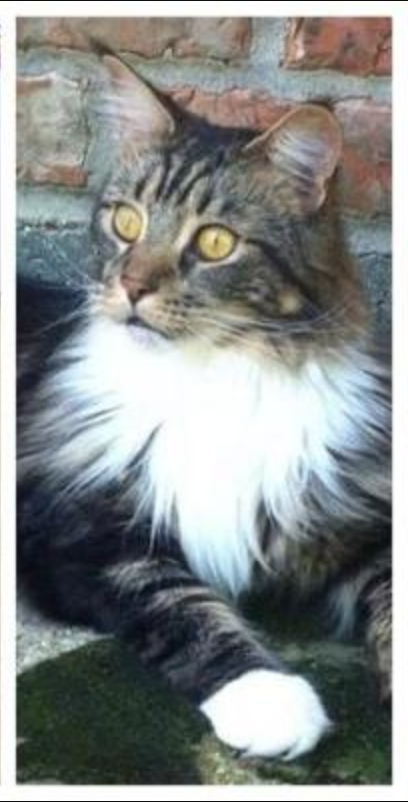
One of the first things you'll notice about a Coonie, even as a kitten, is their impressive size.
These kitties are known for their large, muscular build, which is quite different from the average house cat.
While most domestic cats are medium-sized, a full-size Coonie can tip the scales at around 10 to 25 pounds, and that’s not just fluff!
Their long torso and well-proportioned body give them a sturdy, yet graceful appearance, making them true gentle giants in the world of domestic felines.
On the other hand, our regular cats come in all shapes and sizes, but they typically don't reach the same scale as their purebred Coonie counterparts.
Normal cats, while still adorable, usually have a more modest build, with a body that's not as elongated or muscular as a Coonie's.
Coat And Fur
Another standout feature of these kitties is their luxurious coat. Coonies boast thick, water-resistant fur that's perfect for their origins in the chilly state of Maine.
This long fur isn't just for show - it's functional, too, with a ruff around the neck that gives them a regal appearance and a bushy tail that serves as a built-in blanket during colder months.
The texture of their fur is typically smooth and silky, with a certain resilience that makes them look well-groomed even after a playful romp.
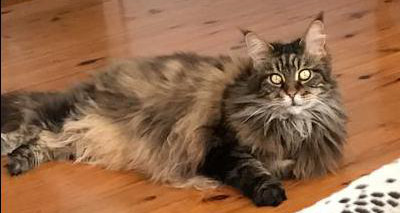
On the other hand, regular cats, particularly those with long or medium hair, have coats that can vary greatly in texture and thickness.
While some may have thick, fluffy fur, others might have a coat that's a bit more sparse or fine.
And while they may also sport a bushy tail, it doesn't quite compare to the full, plume-like tail of our Coonie friends.
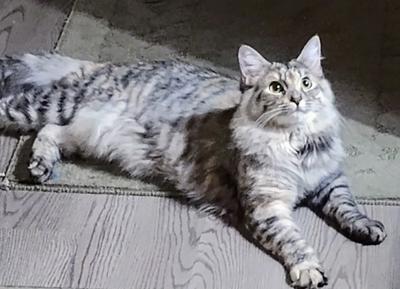
Ears And Ear Tufts
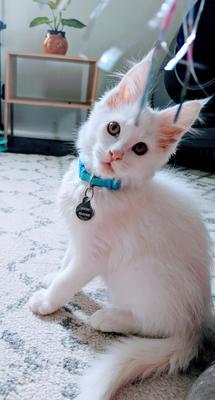
Those who've spent time around Coonies know all about their distinctive ears.
Their large, pointed ears are often adorned with adorable ear tufts, giving them a slightly wild, lynx-like look.
These ear tufts aren't just for decoration - they help protect their ears from the cold, another nod to their hardy origins.
Now, it's worth noting that some regular cats may also have ear tufts, but they are typically less pronounced and less consistent in appearance.
The shape and size of regular house cats' ears can also vary, but they generally don't have the same striking, large ears that Coonies are known for.
Face And Eyes
Let's talk about that face! This breed has a broad, square muzzle that gives them a distinct, almost lion-like expression.
Their large, expressive eyes are another standout feature, often giving them a wise, knowing look that many find irresistible.
In comparison, the facial structure of domestic cats can be quite varied. While some may have a similar square-shaped muzzle, others might have a more rounded or triangular face.
Their eyes, too, come in different shapes and sizes, making each kitty unique in their own right.
Personality And Behavior
When it comes to personality, Coonies are often celebrated for their distinctive traits.
While domestic cats can share many of these characteristics, purebreds like Coonies are bred to consistently exhibit their breed’s signature behaviors.
This predictability is part of what makes purebreds so appealing to potential owners. Here are some personality and behavioral traits that stand out in Coonies:
Playfulness:
Coonies love to play and can stay kitten-like well into adulthood. They enjoy interactive toys, games of fetch, and even splashing in water.
Many domestic cats are also playful, but the energy level can vary widely between individuals.
Intelligence:
Known for their smarts, Coonies are problem-solvers. They can learn tricks, open doors, and figure out puzzles.
Their intelligence often shows in their curiosity about their surroundings.
While any cat can be clever, Maine Coons are bred for their sharp minds, making them especially engaging companions.
Vocalization:
These gentle giants are chatty without being loud. They communicate with chirps, trills, and soft meows rather than yowling.
Many domestic cats are vocal too, but their "voices" and level of chatter can vary greatly.
Affectionate Nature:
Coonies are famously social and love spending time with their families. They often follow you from room to room and enjoy being near, even if they aren’t lap cats.
Domestic cats may be just as loving, but their personalities tend to be more unpredictable.
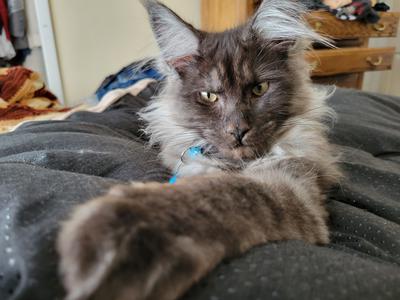
So what is the difference between a Maine Coon vs regular cat? With purebred cats their traits are consistent across the breed.
If you bring home a Coonie, you can expect an intelligent, playful, and friendly companion.
With regular cats, personality is more of a surprise, shaped by individual genetics and experiences.
Both are wonderful, but a purebred offers more predictability if you are seeking specific traits.
Common Myths and Misconceptions
When it comes to this breed, several myths and misconceptions often confuse cat lovers. Let's break them down:
The "M" on the Forehead
Many believe the "M" marking on a cat's forehead means it is a Maine Coon.
In reality, this marking is common in tabby-patterned kitties, regardless of breed. The "M" is simply part of the tabby gene, which is present in both Maine Coons and many others. It is a beautiful feature but not a guarantee of breed.
Descended from Norwegian Forest Cats
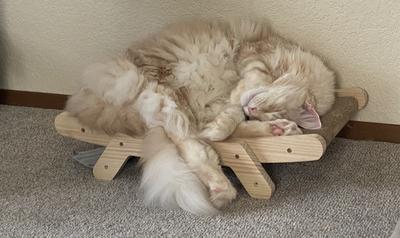
Some think they descended directly from Norwegian Forest Cats because of their similarities, like long fur and tufted ears.
While they share traits, Maine Coons developed in North America, particularly in the state of Maine.
They are a distinct breed with unique traits shaped by their environment and breeding.
The Rarity of Genuine Mixes
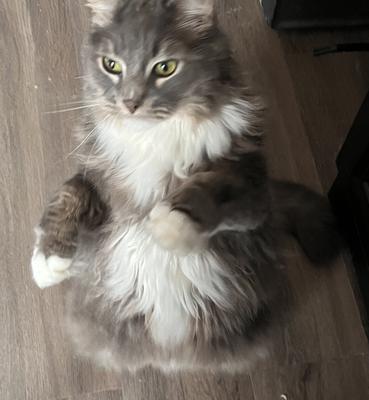
Identifying a Maine Coon mix is tricky without documentation.
Genuine mixes can inherit some physical traits, like a bushy tail or large size, but they may lack the distinctive features of a purebred.
Without DNA testing, it's impossible to differentiate between true mixes and fluffy kitties with similar appearances.
Maine Coon vs Regular Cat: How to Know?
If you want to confirm your cat’s breed, DNA testing can provide accurate answers.
It can identify specific breed markers and clarify whether your feline has Maine Coon ancestry.
Let's remember that every cat, whether a purebred or a domestic mix, has its own unique personality and charm.
Celebrate their quirks, love their traits, and enjoy the joy they bring to your life. While the mystery of your cat’s heritage can be fun to explore, their individuality is what truly matters.
No matter their breed, your feline is one of a kind!
Top of Maine Coon vs Regular Cat
« Back to Maine Coon Mix

